Religion was deeply rooted in the life of ancient Egyptians. It may be fair to say that most aspects of their lives were guided by religion. The Egyptians practiced polytheism with close to 2000 gods and goddesses. Their religion was not a uniform monolithic faith but rather a vast set of diverse beliefs and practices, rooted in the common aim, i.e. interacting with the divine. Among other things, the ancient Egyptians had multiple creation myths, considered many animals as sacred, worshiped their pharaohs, were firm believers in the afterlife and preserved the bodies of the dead. Know more about religion in Ancient Egypt through these 10 interesting facts on their gods and goddesses, temples, myths, beliefs and rituals.
#1 ANCIENT EGYPTIANS HAD MULTIPLE CREATION MYTHS
There are several creation myths in the ancient Egyptian religion; most based on the idea of a primal mass called “Island of Creation”. Most popular among them was the Heliopolitan Myth which considered Heliopolis as this primary mass. It placed Re-Atum as the God of creation; from him, the god of air Shu and the god of moisture Tefnut were created. From them were created Geb, the earth god, and Nut, the sky god. And Geb and Nut produced children who represented the forces of life.
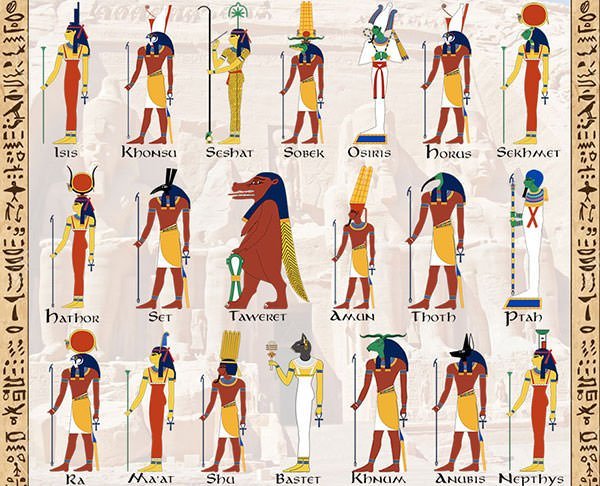
The Memphis Myth placed Memphis as the island of creation. In this myth Ptah replaces Re-Atum as the supreme creator god. From Ptah, a daughter was created who in turn produced Re-Atum.
Developed at Hermopolis, the Hermopolitan Myth makes Thoth, the god of wisdom, responsible for creation. Among many of its versions, one recounts a group of eight gods playing major roles in creation from a primordial ocean. Another account has a cosmic egg as the source of life. Yet another account has Thoth coming from a lotus flower which arose in the “Sea of Knives”.
#2 EGYPTIANS BELIEVED THAT THE SOUL WAS MADE OF MANY PARTS
In ancient Egyptian belief, the soul comprised of five or seven or nine different parts, depending on the eras of their long civilization. Each part had its role in the journey of life and afterlife. The nine parts of the soul were:-
- Khat was the physical body; the mortal which could only be preserved by mummification.
- Ka was one’s double self, which may be understood as close to the western idea of soul.
- Ba, often represented as a human headed bird, was like a link between the corpse and the afterlife.
- Shuyet was the shadow of the soul. It was considered important as a guiding force in the afterlife.
- Sahu was the spiritual body that could dwell in the heavens. It separated from other aspects of the soul once found worthy of eternal existence.
- Akhu was like a shining light that lived on in the Sahu
- Sekhem was the life force
- Jb, or heart, was source of good and evil within a person
- Ren, or the true name, was often kept secret and people would be called by their nicknames all their life. It was the name by which the gods knew the individual soul and how one would be called in the afterlife. A man could be destroyed if his name was obliterated.

#3 MANY ANIMALS WERE CONSIDERED SACRED IN EGYPTIAN SOCIETY
The Egyptians believed that when one of their gods or goddesses came down to earth, they would represent themselves as a specific species of animals. Most of the Egyptian gods are often depicted either as an animal or as animal-headed humans. Some of the important animals in their religion are mentioned below:-
- Ram – Amun, widely accepted as the god of gods, is depicted in ram form. Ram was also considered sacred to Khnum, the god who created man on his potter’s wheel.
- Scarab Beetle – Considered sacred to Khepri, god of resurrection. Khepri pushed the sun across the sky, as the scarab pushes its dung behind it in a ball. The young scarabs born out of the dung symbolized new life and resurrection.
- Cat – It was considered sacred and a symbol of grace and poise. Egyptian god Ra was depicted as “The Great Cat of Heliopolis”. Cats were one of the most recognizable species in Egyptian culture.
- Cow – Among others, the goddesses Isis, Hathor and Nut were often depicted as cows. The cow came to known as the mother of the Pharaoh; who was himself considered divine.
- Bull – The bull was sacred to Osiris and Ptah and was linked to masculinity. Apis was a sacred bull deity worshiped at Memphis. It was regarded as the son of goddess Hathor, a prominent deity. While it was still alive, the Apis bull was seen as the Ba of Ptah, mummified god of creation; and after death, it became Osiris-Apis. Mnevis was a bull deity which had its center of worship at Heliopolis. It was regarded as the Ba of Re-Atum.
- Falcon – The falcon was associated with royalty and was considered as the Ba of solar god Horus.
- Jackal – Anubis was the Egyptian god of mummification. He was represented as a black jackal or dog, or as a man with a head of a jackal or a dog.
- Ibis – Ibis is a long-legged omnivorous bird that eats both plants and animals. Egyptian god Thoth was often depicted as a man with the head of an ibis.

Animals were thought to share an afterlife with humans and they were often buried within family tombs. Many mummified forms of various species of animals have also been discovered in ancient Egypt underlining the sacred value attributed to them.
#4 EGYPTIAN PHARAOHS WERE CONSIDERED AS GODS
The Osiris myth is one of the most influential stories in ancient Egyptian mythology. Osiris was the son of the earth god Geb and the sky goddess Nut. At the start of the myth, he rules over Egypt and there is order in the kingdom. However, he is murdered by his brother Set, who is associated with violence and chaos. Osiris’s wife Isis restores her husband’s body and conceives a son with him who is named Horus. When he becomes an adult, Horus challenges Set for the throne of Egypt. The conflict ends with the triumph of Horus; leading to restoration of order in Egypt. The Egyptians considered royalty as a divine force. The Egyptian pharaoh was seen as a manifestation of Horus in life and Osiris in death. New incarnations of Horus were believed to succeed the deceased pharaoh on earth in the form of new pharaohs.
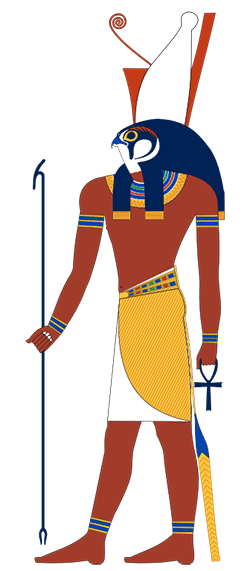
#5 AKHENATEN TRIED TO BRING RELIGIOUS REFORM IN EGYPT
Amenhotep IV was the Pharaoh of Egypt in the mid-13th century BC. He is known for his attempt at abandoning traditional Egyptian polytheism and bringing religious change in Egypt making Aten, the sun disc, as the center of religious life in Egypt. He attempted to erase Amun, the preeminent Egyptian god from documents throughout Egypt. In his sixth year of rule he changed his name to Akhenaten (beloved of Aten). His attempt was however not accepted and after his death, his monuments were dismantled and hidden; his statues were destroyed; and his name excluded from the king lists. He may have well been lost in history but for the discovery of the city of Amarna, which he had built in reverence to Aten.
#6 EGYPTIANS BURIED ANIMALS, SERVANTS AND VARIOUS OTHER THINGS WITH THEIR DEAD
It was customary to entomb the dead with anything that may be useful in their afterlife. Most tombs were filled with everyday items like dishes, jewelry, food and drink. Beloved pets were often mummified and placed along with their masters. All kinds of animals, from mummified mice to an 18-foot long crocodile have been found in mummies’ tombs. In some instances servants have been sacrificed and buried along with kings and royalty.
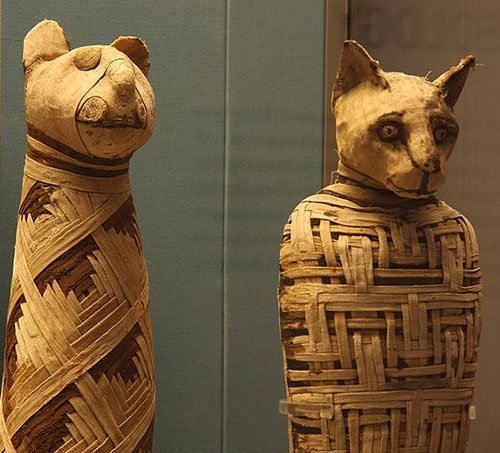
#7 EGYPTIANS BUILT MANY EXQUISITE TEMPLES
The Egyptian temples, exquisite in their design and scale, are categorized in two types. The Cultus, temples dedicated to patron gods, and Mortuary, to serve the spirits of deceased pharaohs. These temples were not necessarily for the general population. Instead, they served as houses of the gods. Among the most famous Egyptian temples are:-
- Medinet Habu – temple of pharaoh Ramesses III
- Temple Complex in Karnak – built by three different pharaohs, the center dedicated to Amun and also containing temples of Mut and Khonsu
- Abu Simbel – two temples built by Ramesses II dedicated to himself and his queen Nefertari. Ramesses II’s temple is dedicated to the three national gods of Egypt while Nefertari’s temple is dedicated to Hathor, the goddess of love and motherhood.
- Temple complex at Dendera – The main structure in this temple is dedicated to Hathor
- Philae temple complex – main structure dedicated to the goddess Isis
- Kom Ombo – Unique double temple dedicated to Sobek and Horus.
- Temple of Edfu – Also known as the temple of Horus
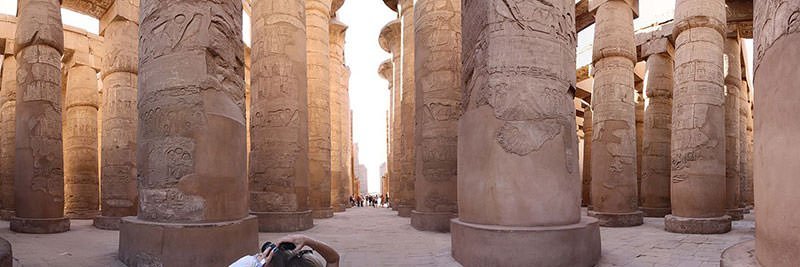
#8 ANCIENT EGYPTIANS BELIEVED IN THE JUDGMENT OF WEIGHING OF THE HEART
Ancient Egyptians believed that in the penultimate stage of your journey through the underworld, you are led into the “Hall of Maat”. Here your heart is measured on a scale opposite Maat’s ‘feather of truth’ by the gods Thoth and Anubis. It was believed that the heart is the seat of a person’s emotions, will and morality and it was vital to have your heart returned. If the heart balanced the feather, it was returned to the deceased and he/she would then be led to the final judgment by the King and Queen of the Underworld. If the heart was found heavier, Ammut, the deity represented as part crocodile, part lion and part hippopotamus, would swallow it and that would be the end of the person’s afterlife.
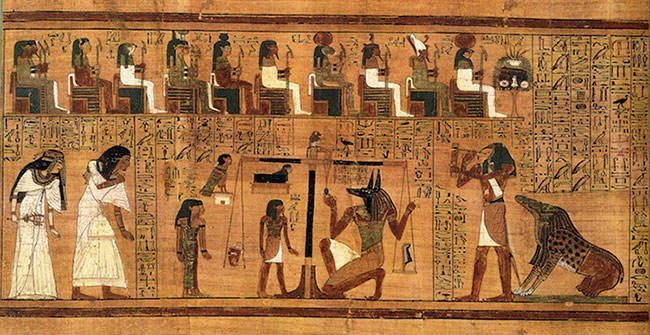
#9 HEKA OR MAGIC WAS AN INTEGRAL PART OF EGYPTIAN FAITH
Heka is loosely translated as “magical power”. However it is a complex idea. It has various translations including “Art of the Mouth” and “using of Ka”. It was considered as the personification of one of the attributes of creator god Atum. Magic, for the ancient Egyptians, was present at the birth of creation. It permeated everything in creation, and as such all things in creation possessed heka to a certain degree. Heka was the god of magic and medicine in ancient Egypt. According to myth, Heka fought and conquered two serpents, and so two intertwined serpents became symbolic of his power. He is frequently seen in funerary texts and inscriptions, guiding the soul of the deceased; and also in medical texts and spells. The symbol of Heka is still associated with medicine.
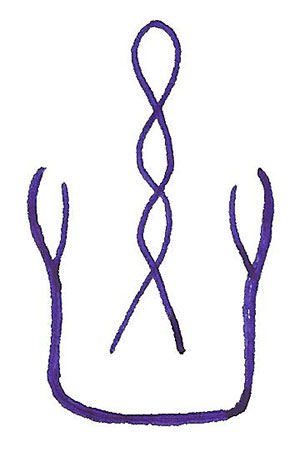
#10 PRESERVATION OF THE BODY WAS A CENTRAL PART OF EGYPTIAN FUNERARY PRACTICES
Preservation of the body was considered important in Ancient Egypt as this was necessary for the soul in the afterlife. Initially the ancient Egyptians buried their dead in the arid desert which mummified the body naturally. Over time elaborate mummification techniques were developed. It was believed that once the Ba (part of spirit) would depart the body it would periodically return to it and for this reunion to be successful the body needed to be intact.
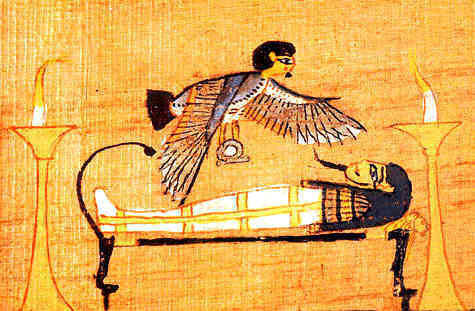
SHABTI DOLLS
Shabti Dolls were placed in the tombs of wealthy Egyptians. It was necessary for people in Ancient Egypt to donate a certain amount of their time every year to public building projects. This could only be avoided by sending their replacements. Believing that the practice may continue in afterlife, Shabti Dolls were placed in the tombs of the wealthy to serve as one’s replacement worker when called upon by the god Osiris for service.

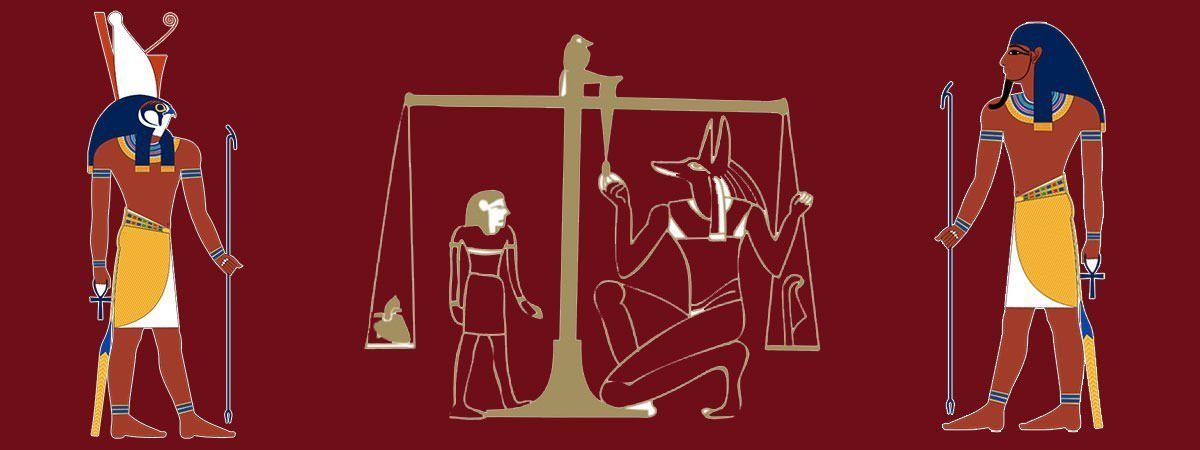
this came in handy when I needed facts but, I would like to see more facts that people didn’t know.
thanks that was helpful for my asingment
Happy to help.
It was very helpful to my assignment too! Thank You!
Happy to help.